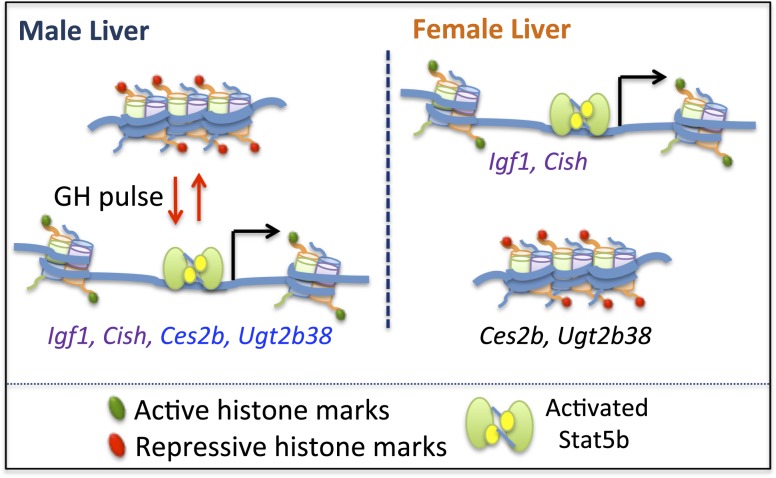Figure 9.
Model for GH pulse-induced chromatin opening at STAT5-responsive genes. In male liver, GH pulse activation of STAT5 is associated with chromatin remodeling linked to chromatin opening, which is proposed to involve acquisition of activating marks and loss of repressive marks, and enables STAT5 binding and transcriptional activation of Igf1, Cish, Ces2b, and Ugt2b38. Termination of a GH pulse is followed by cessation of nuclear STAT5 signaling with loss of STAT5 binding, local recompaction of chromatin associated with reversal of histone mark changes, and termination of gene transcription. In female liver, STAT5 is activated in a more continuous manner than in male liver, owing to its persistent stimulation by circulating plasma GH. STAT5 can thus bind to, and trans-activate, Igf1 and Cish via the same open chromatin sites (DHS) as in male liver, albeit with different kinetics: intermittent in male liver vs more persistent in female liver. GH-activated STAT5 is proposed to be unable to bind to and trans-activate the male-biased genes Ces2b and Ugt2b38 in female liver owing to the compaction of these genes in a repressive chromatin state [see Fig. 10(c) and 10(d)], which is resistant to decompaction and GH/STAT5-induced chromatin opening.

